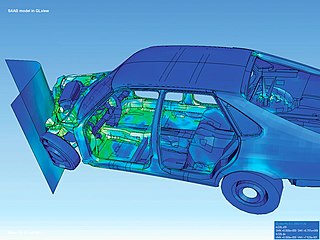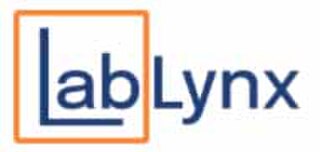
Computer science is the study of computation, automation, and information. Computer science spans theoretical disciplines to practical disciplines. Computer science is generally considered an area of academic research and distinct from computer programming.
Interoperability is a characteristic of a product or system to work with other products or systems. While the term was initially defined for information technology or systems engineering services to allow for information exchange, a broader definition takes into account social, political, and organizational factors that impact system-to-system performance.
An information system (IS) is a formal, sociotechnical, organizational system designed to collect, process, store, and distribute information. From a sociotechnical perspective, information systems are composed by four components: task, people, structure, and technology. Information systems can be defined as an integration of components for collection, storage and processing of data of which the data is used to provide information, contribute to knowledge as well as digital products that facilitate decision making.

A laboratory information management system (LIMS), sometimes referred to as a laboratory information system (LIS) or laboratory management system (LMS), is a software-based solution with features that support a modern laboratory's operations. Key features include—but are not limited to—workflow and data tracking support, flexible architecture, and data exchange interfaces, which fully "support its use in regulated environments". The features and uses of a LIMS have evolved over the years from simple sample tracking to an enterprise resource planning tool that manages multiple aspects of laboratory informatics.
The MIT Lincoln Laboratory, located in Lexington, Massachusetts, is a United States Department of Defense federally funded research and development center chartered to apply advanced technology to problems of national security. Research and development activities focus on long-term technology development as well as rapid system prototyping and demonstration. Its core competencies are in sensors, integrated sensing, signal processing for information extraction, decision-making support, and communications. These efforts are aligned within ten mission areas. The laboratory also maintains several field sites around the world.

Visualization or visualisation is any technique for creating images, diagrams, or animations to communicate a message. Visualization through visual imagery has been an effective way to communicate both abstract and concrete ideas since the dawn of humanity. Examples from history include cave paintings, Egyptian hieroglyphs, Greek geometry, and Leonardo da Vinci's revolutionary methods of technical drawing for engineering and scientific purposes.
E-Science or eScience is computationally intensive science that is carried out in highly distributed network environments, or science that uses immense data sets that require grid computing; the term sometimes includes technologies that enable distributed collaboration, such as the Access Grid. The term was created by John Taylor, the Director General of the United Kingdom's Office of Science and Technology in 1999 and was used to describe a large funding initiative starting in November 2000. E-science has been more broadly interpreted since then, as "the application of computer technology to the undertaking of modern scientific investigation, including the preparation, experimentation, data collection, results dissemination, and long-term storage and accessibility of all materials generated through the scientific process. These may include data modeling and analysis, electronic/digitized laboratory notebooks, raw and fitted data sets, manuscript production and draft versions, pre-prints, and print and/or electronic publications." In 2014, IEEE eScience Conference Series condensed the definition to "eScience promotes innovation in collaborative, computationally- or data-intensive research across all disciplines, throughout the research lifecycle" in one of the working definitions used by the organizers. E-science encompasses "what is often referred to as big data [which] has revolutionized science... [such as] the Large Hadron Collider (LHC) at CERN... [that] generates around 780 terabytes per year... highly data intensive modern fields of science...that generate large amounts of E-science data include: computational biology, bioinformatics, genomics" and the human digital footprint for the social sciences.
Software as a service is a software licensing and delivery model in which software is licensed on a subscription basis and is centrally hosted. SaaS is also known as "on-demand software" and Web-based/Web-hosted software.
The Institute for Defense Analyses (IDA) is an American non-profit corporation that administers three federally funded research and development centers (FFRDCs) – the Systems and Analyses Center (SAC), the Science and Technology Policy Institute (STPI), and the Center for Communications and Computing (C&C) – to assist the United States government in addressing national security issues, particularly those requiring scientific and technical expertise. It is headquartered in Alexandria, Virginia.
The School of Engineering and Applied Science (SEAS) at the George Washington University in Washington, D.C. is a technical school which specializes in engineering, technology, communications, and transportation. The school is located on the main campus of the George Washington University and offers both undergraduate and graduate programs.
The following outline is provided as an overview of and topical guide to information technology:

The Open Grid Forum (OGF) is a community of users, developers, and vendors for standardization of grid computing. It was formed in 2006 in a merger of the Global Grid Forum and the Enterprise Grid Alliance. The OGF models its process on the Internet Engineering Task Force (IETF), and produces documents with many acronyms such as OGSA, OGSI, and JSDL.

Pulchowk Campus, commonly known as Pulchowk Engineering Campus, is one of the five constituent campuses of the Tribhuvan University, Institute of Engineering in Nepal, and is one of the best engineering colleges in Asia. Other four constituent campuses are Thapathali Campus, Paschimanchal Campus, Purwanchal Campus, and Chitwan Engineering Campus. This is the central campus of Institute of Engineering (IOE), situated in Lalitpur metropolitan city. The campus offers bachelor’s degree, master’s degree and doctoral degree programs.
International standards in the ISO/IEC 19770 family of standards for IT asset management address both the processes and technology for managing software assets and related IT assets. Broadly speaking, the standard family belongs to the set of Software Asset Management standards and is integrated with other Management System Standards.
Virtual design and construction (VDC) is the management of integrated multi-disciplinary performance models of design-construction projects, including the product, work processes and organization of the design - construction - operation team in order to support explicit and public business objectives.
Informatics is the study of computational systems, especially those for data storage and retrieval. According to ACM Europe andInformatics Europe, informatics is synonymous with computer science and computing as a profession, in which the central notion is transformation of information. In other countries, the term "informatics" is used with a different meaning in the context of library science.

Security information and event management (SIEM) is a field within the field of computer security, where software products and services combine security information management (SIM) and security event management (SEM). They provide real-time analysis of security alerts generated by applications and network hardware. Vendors sell SIEM as software, as appliances, or as managed services; these products are also used to log security data and generate reports for compliance purposes. The term and the initialism SIEM was coined by Mark Nicolett and Amrit Williams of Gartner in 2005.

LabLynx, Inc. is a privately owned, funded, and managed American corporation that develops, supports, and markets laboratory information management system (LIMS) solutions. Its primary offerings over the years have included webLIMS and ELab. The company’s primary clients include laboratories in the agriculture, clinical, environmental, forensics, health care, and manufacturing industries, including government agencies. The company is known for introducing one of the first browser-based LIMS products in 1997 and being in the laboratory informatics industry for decades.
The following outline is provided as an overview of and topical guide to software development:
Georgios (George) V. Magklaras is a computer scientist working as a Senior Computer Systems Engineer at the Norwegian Meteorological Institute, in Norway. He also co-founded Steelcyber Scientific, an information security based consultancy specialising in digital forensics. He is a High Performance Computing engineer and information security researcher. He developed methods in the field of insider IT misuse detection and prediction and digital forensics. He is the author of the LUARM and POFR tools for the Linux Operating System. He has been a strong advocate of Linux, Open Source tools and the Perl programming language and has given a series of lectures internationally in the fields of Intrusion Detection Systems, Digital forensics, Bioinformatics, Computer Programming and Systems Administration.






